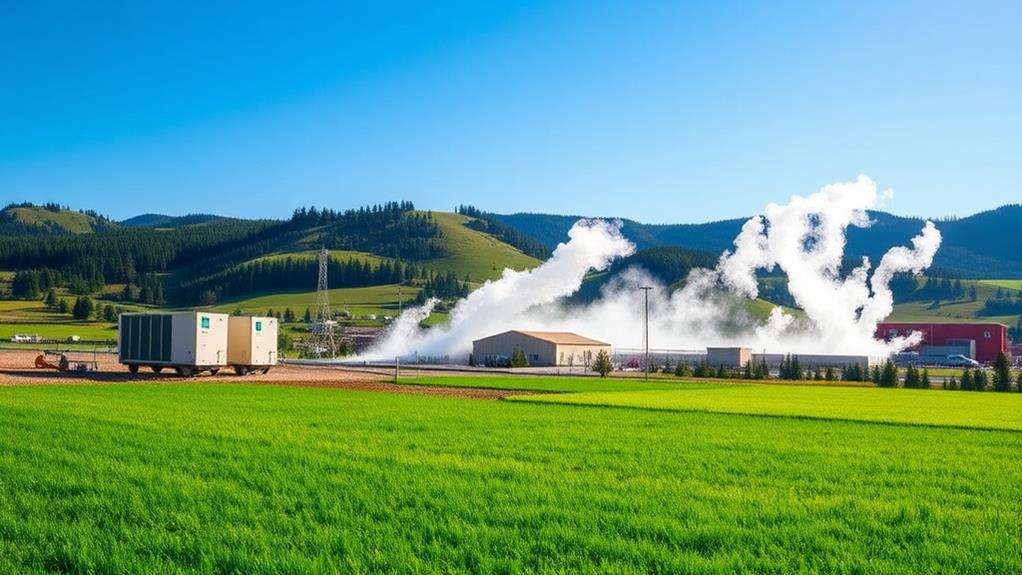To calculate the ROI for wind turbines, we start by examining the total initial investment, which for a 2.6 MW turbine averages around $3,453,950, including installation and operational costs. We then need to assess the annual energy production, typically about 3,734 MWh, generating roughly $397,671 in revenue per year. The estimated payback period under ideal conditions is approximately 6 years and 7 months. Key factors that influence ROI include local electricity prices, wind speeds, operational efficiency, and government incentives, which can greatly improve our financial returns. Further exploration reveals more intricate details and calculations.
Key Takeaways
- Calculate total installation costs, including turbine purchase, site preparation, and permits, to determine initial investment.
- Estimate annual gross revenue from energy production to assess potential earnings.
- Consider local electricity prices and average wind speeds, as they significantly affect energy output and ROI.
- Account for government incentives, such as tax credits and grants, which can lower initial costs and enhance financial returns.
- Use the formula: Payback Period = Initial Investment / Annual Gross Revenue to calculate the time needed to recoup the investment.




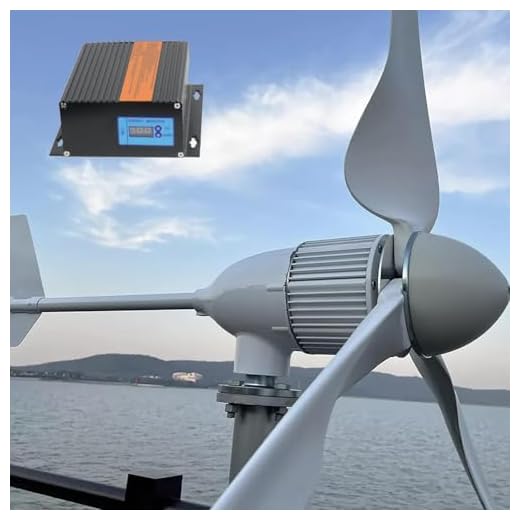





Cost Breakdown of Wind Turbines
When we consider the cost breakdown of wind turbines, what components should we really be focusing on? The initial costs of a 2.6 MW wind turbine, averaging around $3,453,950, encompass various factors, including installation costs such as turbine purchase, foundation construction, electrical connections, permits, and site preparation. These elements considerably influence our total expenditure. Additionally, transportation costs, particularly for oversized components like blades, can add considerable logistical expenses to our budget. It’s also essential to note that operations and maintenance (O&M) costs have been decreasing due to advancements in engineering, which enhances the financial viability of our investments. By understanding these costs thoroughly, we can better navigate the complexities of wind turbine projects and make informed decisions.



Understanding Return on Investment
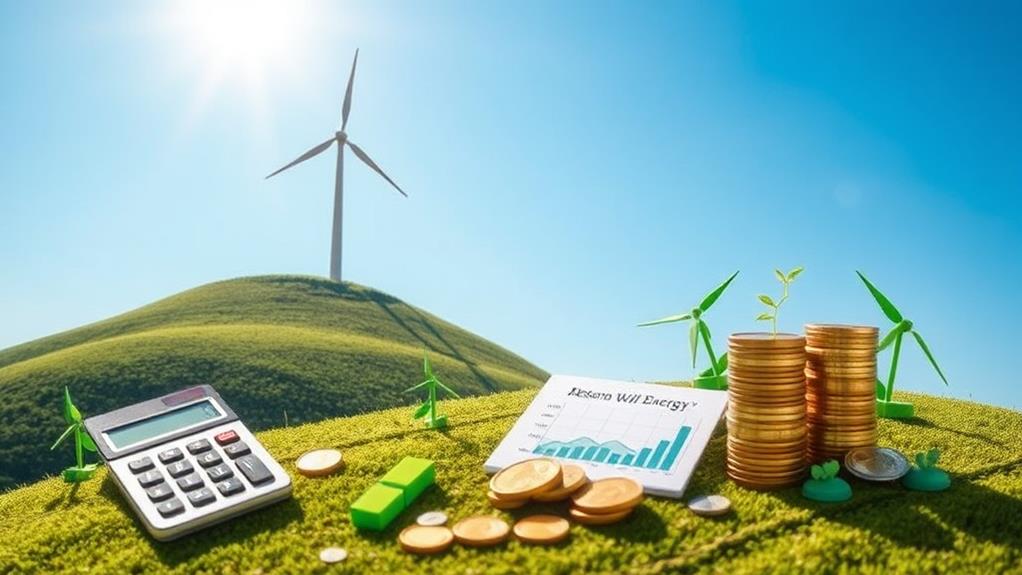
Understanding the return on investment (ROI) for wind turbines is vital for ensuring our financial decisions align with our energy goals. By comparing the total costs of installation and maintenance against the financial benefits from energy production, we can accurately assess our investment. For instance, a 2.6 MW wind turbine can generate an average yearly gross revenue of approximately $397,671, leading to an estimated payback period of around 6 years and 7 months under ideal conditions. It’s important to evaluate factors like local electricity prices, wind speed, and operational efficiency, as they greatly impact our ROI. Additionally, government incentives can further enhance our financial returns, making it essential to grasp these economic variables for informed decision-making.
Key Factors Affecting Payback Period
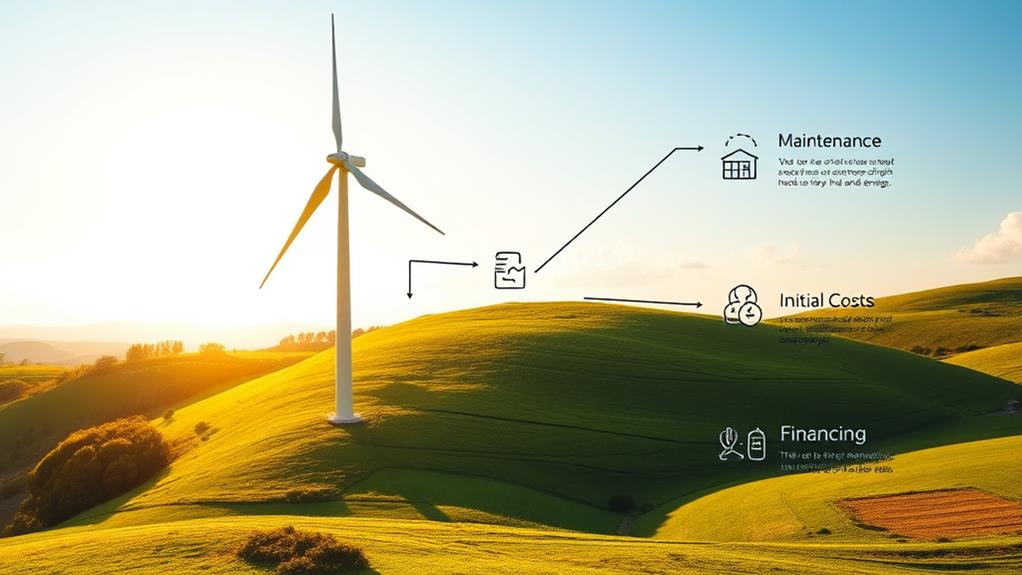
Several key factors affect the payback period for wind turbines, and recognizing these variables can help us make informed decisions. Understanding these elements not only enhances our investment strategy but also aligns our expectations. Here are three important factors to evaluate:
- Initial Investment: The upfront costs associated with purchasing and installing a wind turbine can greatly influence our return on investment.
- Wind Speed: Higher average wind speeds at the installation site lead to increased energy production, which can shorten the payback period.
- Electricity Prices: Regions with elevated electricity rates generally provide quicker returns due to increased revenue from generated power.
Additionally, government incentives can considerably decrease the initial investment costs, further shortening the payback period for our wind turbine projects.






Role of Government Subsidies
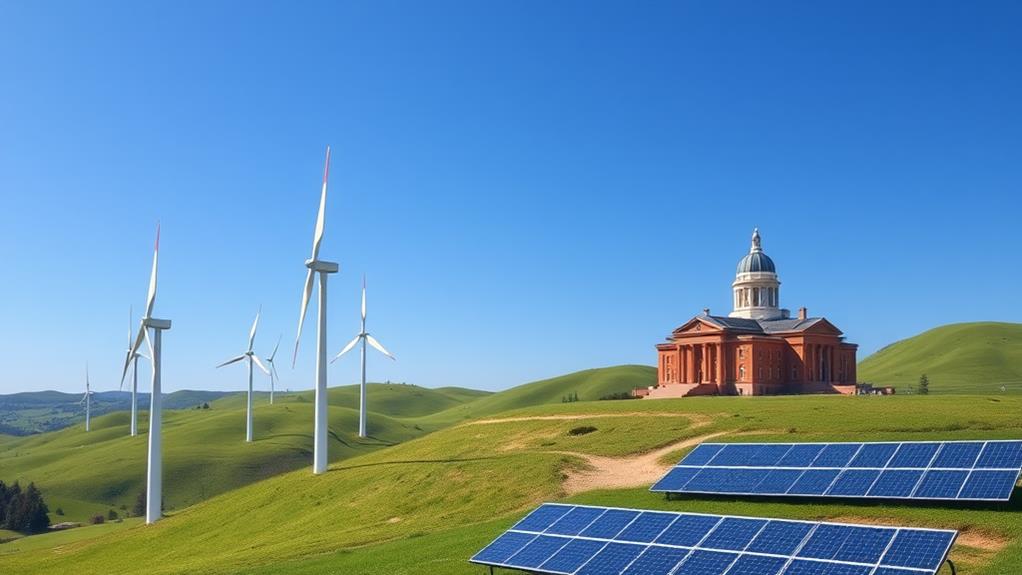
As we explore the role of government subsidies in wind energy, it’s essential to understand the various types available, such as tax credits per kilowatt-hour (kWh) and one-time investment incentives, which can substantially reduce the initial costs of wind turbine installations. These financial supports not only enhance the return on investment (ROI) for developers but also stabilize long-term energy pricing, making projects more attractive to potential investors in the renewable sector. By examining the impact of these subsidies, we can better appreciate how they contribute to the overall growth and viability of wind energy initiatives globally.
Types of Subsidies Available
Government subsidies play a critical role in making wind energy installations more financially viable for us as investors. These incentives greatly reduce our initial costs, allowing us to embrace renewable energy more readily. Here are three types of subsidies we can consider:
- Tax Credits: In the U.S., one-time tax credits are available for wind installations, which can considerably lower our upfront investment for turbine purchase and installation.
- Feed-in Tariffs: Countries like the UK and Japan offer guaranteed payments for every kilowatt-hour generated, enhancing revenue predictability.
- Grants and Loans: Various programs provide financial support, making it easier for us to invest in clean energy technologies.
These subsidies not only enhance our return on investment but also support the broader shift to sustainable energy.
Impact on Investment Returns
Understanding the types of subsidies available sets the stage for recognizing their considerable impact on our investment returns in wind energy. Government subsidies considerably lower the initial costs associated with wind turbine installations, allowing us to more effectively recoup the initial investment. For instance, one-time tax credits can drastically reduce upfront expenses. In the U.S., ongoing tax credits per kWh produced further enhance our Return on Investment (ROI), while similar incentives in countries like the UK, China, and Japan contribute to quicker payback periods. However, as profitability in the wind sector increases, some European nations are phasing out these subsidies, potentially affecting future investment returns. Therefore, we must carefully navigate this evolving landscape to calculate the payback accurately.
Environmental Impact Considerations
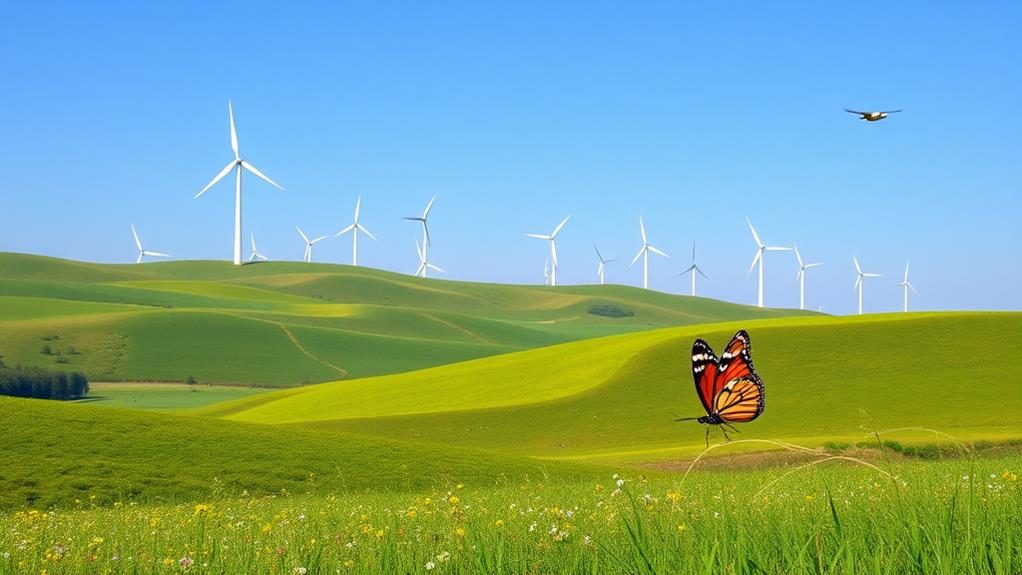
As we consider the environmental impact of wind turbines, it is crucial to recognize their role in carbon footprint reduction, particularly given that the environmental payback period can be as short as six months under ideal conditions. However, we must also evaluate the resource manufacturing effects, which can have significant implications for sustainability, alongside the decommissioning impacts that arise at the end of a turbine’s operational life. By understanding these factors, we can better appreciate the overall environmental footprint associated with wind energy and make informed decisions regarding its implementation.
Carbon Footprint Reduction
Wind turbines’ environmental benefits are considerable, particularly in their ability to reduce carbon footprints. By investing in wind energy, we not only make a substantial initial investment but also contribute to a cleaner future. The payback period for energy generated is impressively short, often around six months under ideal conditions. Here are key points illustrating the impact of wind energy on carbon footprint reduction:
- Each MWh generated offsets approximately 1.5 to 2.5 tons of CO2 emissions, greatly diminishing reliance on fossil fuels.
- A 2.6 MW turbine can entirely offset its carbon footprint within its first year of operation.
- Proper decommissioning practices can further enhance sustainability by recycling materials and minimizing landfill waste.
Together, we can foster a more sustainable world through wind energy.
Resource Manufacturing Effects
The environmental impact of wind turbine manufacturing is a crucial aspect of the overall sustainability equation. While the initial carbon footprint arising from raw material procurement and production processes can be significant, we must take into account the energy payback period, which typically spans around six months under ideal conditions. In less favorable scenarios, this period may extend up to one year, underscoring the importance of efficient manufacturing practices. The table below illustrates key manufacturing effects to take into account:
| Factor | Impact |
|---|---|
| Carbon Footprint | Initial emissions |
| Energy Payback | 6 months (ideal) |
| Raw Material Needs | High resource demand |
| Efficiency Practices | Reduce emissions |
| Long-term Benefits | Lower fossil fuel reliance |
Embracing sustainable practices can lead to significant long-term reductions in greenhouse gas emissions.
Decommissioning Impacts
When we look into the decommissioning of wind turbines, it’s clear that careful planning is vital to minimize environmental impacts. Addressing these decommissioning impacts can greatly enhance our sustainability efforts and reduce our overall environmental footprint. To guarantee a responsible approach, we should focus on:
- Recycling Materials: Prioritizing the recovery of metals and composites used in turbine construction can alleviate waste generation.
- Land Restoration: Implementing strategies for land restoration and habitat protection helps offset ecological disruption caused by turbine removal.
- Environmental Payback Period: Understanding that the environmental payback period for wind energy—including manufacturing, operation, and decommissioning—averages about six months to one year under ideal conditions can guide our practices in this sector.
Calculating Installation Costs
Installing a wind turbine involves a range of costs that we need to factor in for a clear understanding of the total investment. The installation costs can include turbine purchase, site preparation, foundation work, assembly, and electrical connections, which encompass necessary cables, transformers, and meters to integrate with the power grid. For example, a 2.6 MW turbine installation can average around $3,453,950, influenced by factors such as manufacturing and transportation challenges, as well as local wind speeds. Additionally, we must account for regulatory permits, which can incur extra fees depending on local compliance requirements. By thoroughly evaluating these various components, we can gain an all-encompassing perspective on the total costs associated with wind turbine installation.
Energy Production Estimation
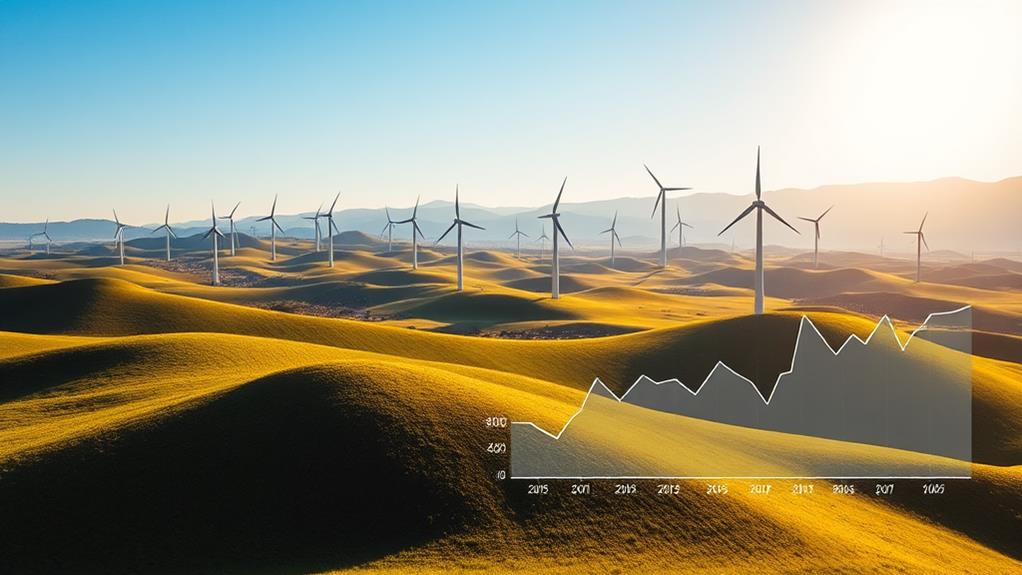
Often, energy production estimation is a critical step in evaluating the financial viability of a wind turbine project. For instance, we can anticipate that a 2.6 MW wind turbine may generate about 3,734 MWh annually. To enhance our estimates, we should consider these key factors:
- Average Wind Speed: Higher speeds lead to greater energy output.
- Wind Resource Data: Accurate data helps tailor predictions based on specific site conditions.
- Manufacturer Specifications: These provide initial estimates but should be adjusted for local wind conditions.
Long-Term Financial Planning
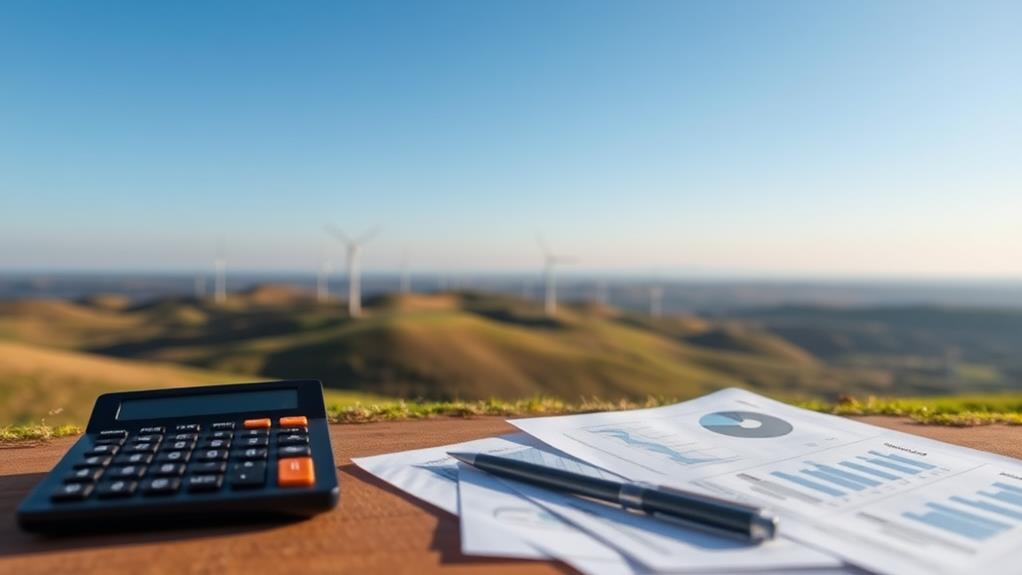
Long-term financial planning for wind turbine projects is essential for maximizing our investment returns. By understanding the average lifespan of 20 to 25 years, we can make informed decisions that enhance the profitability of an investment. It’s imperative to factor in depreciation, forecast annual energy production, and maintenance costs. Government incentives, like tax credits, can also greatly improve our ROI. Additionally, recognizing local electricity price fluctuations is critical for determining the payback period.
| Factor | Impact on ROI | Importance |
|---|---|---|
| Lifespan | Long-term revenue | Informed decision-making |
| Depreciation | Affects net income | Accurate assessments |
| Incentives | Boosts profitability | Financial viability |
| Electricity Prices | Revenue generation | Sustainable planning |
Frequently Asked Questions
How to Calculate Payback Period for Wind Turbine?
To calculate the payback period for a wind turbine, we should consider wind resource potential, installation costs, maintenance expenses, and energy savings. By evaluating these factors, we can better understand our investment’s timeline and benefits together.
What Is the ROI for a Wind Turbine?
Isn’t it exciting to explore wind energy benefits together? Our ROI hinges on turbine efficiency factors, installation costs, and maintenance expenses. By understanding these components, we can maximize our investment in renewable energy!
What Is the Pay Back on a Wind Turbine?
When we consider the payback on a wind turbine, we should factor in installation costs, maintenance expenses, and energy savings. Together, these elements help us understand the financial viability of our wind energy projects.
What Is the Profit Margin on Wind Turbines?
Imagine a garden thriving with sunflowers; just like those flowers, wind turbines bloom with profitability factors. By maximizing turbine efficiency and minimizing maintenance costs, we can enjoy impressive energy savings and robust profit margins together.

